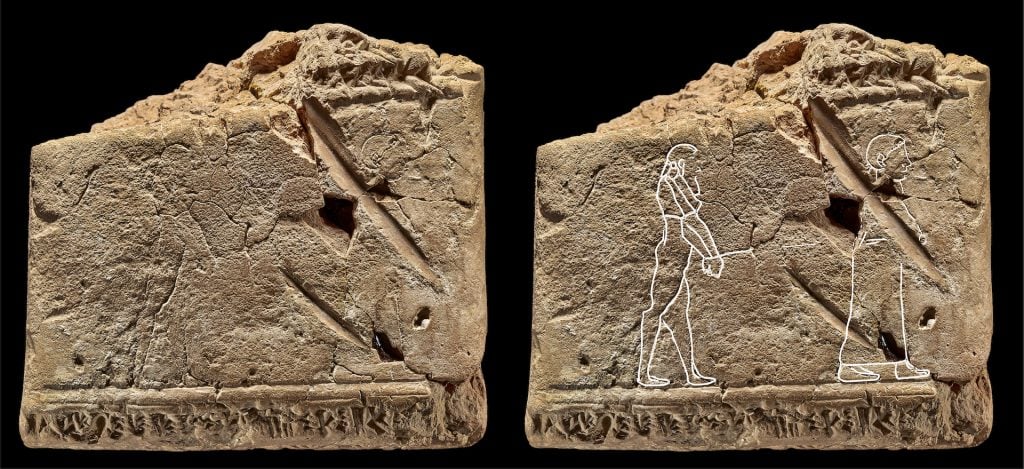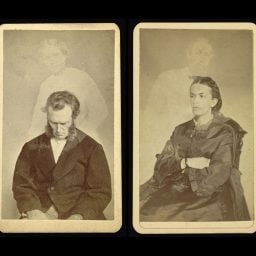A Babylonian tablet dating back to 1500 B.C.E. inscribed with instructions on how to perform an exorcism may depict one of the oldest images of a ghost in the world, according to a new book by British Museum curator Irving Finkel.
The First Ghosts: Most Ancient of Legacies takes a look at the history of our relationship with the spiritual realm, past the more recent image of clanking chains and sheets to early human cultures where, according to Finkel, ghosts were an accepted part of life. The assistant keeper of ancient Mesopotamian script, languages and cultures in the department of the Middle East at the British Museum was inspired to write the book after reading another history of ghosts that started in the 18th century.
“I suddenly thought, ‘Well, what about our stuff? What about Mesopotamia?'” Finkel recalled to artnet News. It then occurred to the curator that the archives and collections he had access to at the British Museum meant he could conduct research back to the earliest history of ghosts and our relationship with them.
“It twigged with me that actually, Mesopotamia is completely unknown as a resource to people who are interested in how old the story of ghosts is, and how far back we can trace it.” In Mesopotamia, they believed that if someone had died in a horrible way, they might come back and bother the people they knew when they were alive, Finkel said. Ancient people collected sightings of spirits “and documented how to get rid of each one, so we have a whole dossier.”
The fragment of the Babylonian clay tablet in question is inscribed with detailed instructions on how to rid yourself of a specific type of ghost, a bothersome older man. The drawing shows an older thin man tied to another figure, an attractive young woman who was intended to lead him back to the underworld, where they would both remain. The drawing on the tablet is extremely well done, leading Finkel to believe this was the work of a highly accomplished draftsman.
“You had this situation where people tended to be sympathetic towards ghosts unless they’re really foul,” he explained. “When they were, there were specialist magicians or exorcists who knew the right spells and rituals and what you could do to get rid of the ghost, drive it out and send it back to the underworld where it belonged,” Finkel explained.
The First Ghosts includes examples of other objects designed to drive away spirits such as bronze amulets, a ritual involving a human skull, and a chapter titled “The Delicate Art of Necromancy.” Having worked with the ancient world since he was 17, Finkel sees past practices and ideas about the spiritual world echoing through to today, whether it be a psychic offering to speak with dead relatives, or the popularity of supernatural films from Ghostbusters to Paranormal Activity.
“The basic belief system, as far as I can see, is unchanged. So, I’ve come to the conclusion that human beings as a whole species have always believed in ghosts from the very beginning,” Finkel said. “Is it all still going on? Yeah, the funny thing is, it really is.”







